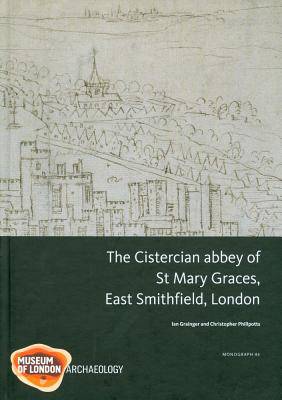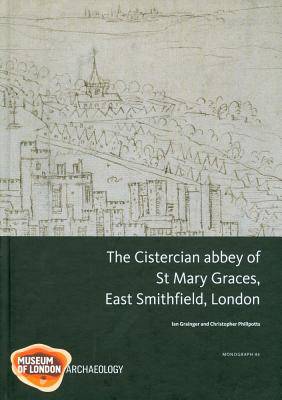
- Afhalen na 1 uur in een winkel met voorraad
- Gratis thuislevering in België vanaf € 30
- Ruim aanbod met 7 miljoen producten
- Afhalen na 1 uur in een winkel met voorraad
- Gratis thuislevering in België vanaf € 30
- Ruim aanbod met 7 miljoen producten
Zoeken
The Cistercian Abbey of St Mary Graces, East Smithfield, London
Ian Grainger, Christopher Phillpotts
€ 30,45
+ 60 punten
Omschrijving
The abbey of St Mary Graces in East Smithfield, London, was excavated in 1983-8 as part of the Royal Mint site. Founded in 1350 by Edward III and suppressed in 1539, it was the only new Cistercian house in the 14th century and the last founded in England before the Dissolution. It was also the only Cistercian abbey established in an urban setting and was built in the immediate aftermath of the Black Death of 1348-50 on the site of one of two emergency burial grounds created in London to cope with that epidemic. The excavations recorded approximately three-quarters of the abbey ground plan. Elements of the church were uncovered, including much of the presbytery, part of the nave and several chapels, together with 131 burials of both laity and ecclesiastics. Also recorded were parts of the chapter house, cloisters, refectory, infirmary and kitchen, as well as two external cemeteries. While the ground plan included elements that are paralleled in earlier Cistercian houses, overall, the abbey's layout was far closer to that of contemporary 14th-century houses, particularly those of the friars. The work reported here represents the large-scale excavation and post-excavation analysis of a singular, relatively short-lived, later medieval Cistercian house and is of considerable importance to medieval archaeology and specifically to Cistercian studies.
Specificaties
Betrokkenen
- Auteur(s):
- Uitgeverij:
Inhoud
- Aantal bladzijden:
- 204
- Taal:
- Engels
- Reeks:
- Reeksnummer:
- nr. 44
Eigenschappen
- Productcode (EAN):
- 9781907586026
- Verschijningsdatum:
- 15/04/2011
- Uitvoering:
- Hardcover
- Formaat:
- Genaaid
- Afmetingen:
- 211 mm x 297 mm
- Gewicht:
- 1111 g

Alleen bij Standaard Boekhandel
+ 60 punten op je klantenkaart van Standaard Boekhandel
Beoordelingen
We publiceren alleen reviews die voldoen aan de voorwaarden voor reviews. Bekijk onze voorwaarden voor reviews.











